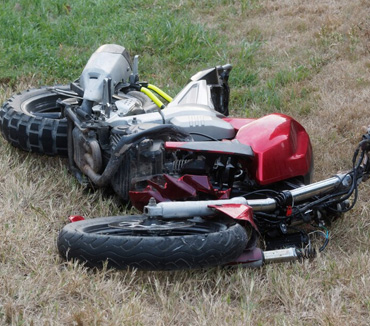Spinal Cord Injuries and Paralysis in California
A spinal cord injury is sudden and irreversible. The victim’s life is forever changed and the ripple effect touches the entire family. Yet life goes on. With rehabilitation, adaptive technologies and other assistance, people paralyzed in accidents can adapt and lead productive and fulfilling lives even though they will endure physical, psychological, financial and legal barriers on the road to reclaiming their lives.
Paralysis, the inability to move or use certain parts of the body, can be caused by a number of different accidents including car crashes, motorcycle accidents, bicycle accidents, pedestrian accidents and even birth accidents. Typically, the victim suffers a loss of muscle function and nerve damage immediately following a serious injury. When nerves have been torn or compressed, a victim can suffer paralysis. In the United States, nearly 1.3 million people reported paralysis from a spinal cord injury.
In a condition of paralysis, a person experiences a loss of feeling either localized (in one small area of the body) or general (over a large area of the body). Such cases involve more than the original injury that resulted in the paralysis such as bladder or bowel issues, depression and pain, respiratory health, sexual health and uncontrolled spasms.
Types of Spinal Cord Injuries
Spinal cord injuries are classified as complete or incomplete. With an incomplete injury, the spinal cord has not been severed and the accident victim will retain some degree of motor or sensory function below the injury site. In a complete injury, the sufferer will lose all sensory and motor control below the injury location. The spinal cord is completely unable to communicate with the brain at or below the injury line.
- Complete Spinal Cord Injuries
Complete SCIs are the most serious and occur when the spinal cord is injured, eliminating the brain’s ability to send signals below the injury site. For an injury impacting the lumbar spinal cord, for example, it can lead to paralysis below the waist while preserving your motor functions in your upper body and arms (paraplegia). For complete injuries in the cervical spine, however, this often leads to a loss of motor function in the lower and upper body (tetraplegia, which is also known as quadriplegia).
- Incomplete Spinal Cord Injuries
Incomplete SCIs commonly result from compression or damage being inflicted to the spinal cord that reduces the brain’s ability to send signals below the injury site. Because of the partially-compromised condition of the spinal cord, incomplete injuries vary drastically from person to person. Some sensory and motor functions may be slightly compromised in some or nearly eliminated in others. Additionally, some incomplete injuries result in triplegia, or the loss of sensation and movement in one arm and both legs.
Incomplete spinal cord injuries are increasingly common, thanks in part to better treatment and increased knowledge about how to respond—and how not to respond—due to improved spinal cord injury research. These injuries now account for more than 60% of spinal cord injuries, which means we’re making real progress toward better treatment for SCI rehabilitation.
Types of Paralysis
“Paralysis” refers to the loss of ability to move and/or feel sensation in the trunk and limbs. It can occur when something interferes with the ability to pass messages from the brain to the body. Traumatic damage to the spine can block these messages partially or completely, as can strokes and some illnesses. Victims of spinal cord injuries who suffer paralysis often need part- or full-time care. They may not be able to walk, stand, or perform daily tasks on their own. Paralysis is typically permanent, with improvements sometimes possible through extensive rehabilitation and physical therapy.
Generally speaking, there are four different types of paralysis:
- Monoplegia: this is a type of paralysis that only affects one typically smaller part of the body, such as a limb. In many cases, patients who suffer from monoplegia regain feeling in most of their body but do not have feeling that returns to one part of the body, just as an arm. While certain diseases can cause monoplegia, brain injuries and nerve damage can also result in monoplegia.
- Hemiplegia: this is a type of paralysis that often is linked to stroke or cerebral palsy. It affects only one side of a person’s body, with paralysis of the arm and the leg on that side of the body.
- Paraplegia: this is a type of paralysis that affects the entire lower body, or “all or part of the trunk, legs, and pelvic organs.” It often results from spinal cord injuries in accidents, and it leaves patients unable to walk or to use their legs or lower bodies in any capacity. Paraplegia is another word for spine injuries that result in paralysis below the waist. Incomplete and complete paraplegia are the second- and third-most frequent neurological categories, accounting for 21.3% and 20%, respectively. Paraplegics typically experience impaired function and sensation in both legs and the hips. Paraplegia may affect the function of the bowel, bladder, and/or sexual organs. Some paraplegics cannot move their legs or feel anything below their waists. Others experience some movement and sensation.
- Quadriplegia: this is a type of paralysis that is also known as tetraplegia, and it refers to paralysis below a person’s neck. In other words, it means that a person’s arms, legs, trunk, and pelvic organs are all paralyzed. Quadriplegia, or tetraplegia, refers to paralysis in all four limbs and the torso. Many people with quadriplegia are completely unable to move, with significant loss of movement and sensation below the neck. Damage to the highest vertebra in the spinal cord, sections C1 through C7, can result in quadriplegia. These types of spinal cord injuries are often immediately fatal. Survivors of cervical spine injuries will most likely live with the affects of quadriplegia the rest of their lives.
Causes of Spinal Cord Injuries
The most common cause of spinal cord injury is trauma. Nearly half of the injuries are caused by motor vehicle accidents. Other types of trauma include:
- Falls
- Violence (stabbing or gunshot wounds to the spine)
- Sporting injuries (diving, football, rugby, equestrian, etc.)
Spinal cord injury can also be caused by compression of the cord by a tumor, infection, or inflammation. Some patients have a smaller than normal spinal canal (called spinal stenosis) and are at a higher risk of injury to the spinal cord.
All tissues in your body including the spinal cord require a good blood supply to deliver oxygen and other nutrients. Failure of this blood supply to the spinal cord can cause spinal cord injury. This can be caused by an aneurysm (ballooning of a blood vessel), compression of a blood vessel or a prolonged drop in blood pressure.
Effects of a Spinal Cord Injury
The effects of a spinal cord injury also depend on whether the injury completely severs the cord. A complete injury will totally cut the nerve connection between the brain and the nerve endings below, and the victim will lose control over the affected areas. An injury to the lower areas of the spinal cord may lead to partial paralysis. Victims of lower spinal injuries sometimes lose the ability to walk or control bowel functions. With incomplete spinal injuries, victims may regain some motor functionality over time with extensive treatment.
A severe spinal cord injury will often cost the sufferer hundreds of thousands of dollars for basic care each year. A spinal cord injury close to the skull may leave the victim completely paralyzed. Added up over a lifetime, the costs of such an injury are astronomical. In addition to financial costs, spinal cord injuries may come at considerable mental and emotional costs, including anxiety, depression, feelings of helplessness, and more.
When Should I File a Paralysis Lawsuit?
The clock starts ticking on crucial evidence right away, so the sooner you contact a paralysis attorney to look into your case, the better! The Duque Law Group can help investigate what really happened. We regularly connect clients with doctors or transportation, so they can seek the medical care that they need.
The State of California has a two year Statute of Limitations to file a personal injury lawsuit, so it is important to contact a paralysis lawyer right away. For medical malpractice claims, you may be granted up to three years from the initial surgery OR one year from the discovery of injury. Birth injury claims in California can be pursued as late as when the child turns 18.
What Damages Can I Sue For in a Paralysis Lawsuit?
Paralysis settlements or jury awards provide money to cover:
Tangible expenses – Hospital stays, ambulance rides, co-pays, therapies, surgeries, medications, assistive technologies, wheelchairs, lost time off work, reduced capacity to earn future money.
Intangible expenses – Emotional pain and suffering, disability, disfigurement, loss of consortium, loss of enjoyment in life, loss of hobbies or skills. California has a cap for this type of damage at $250,000 for medical malpractice claims.
In the worst cases, where paralysis leads to death, families can file a claim for their loss of companionship, loss of guidance, loss of income, cremation or burial costs, and funeral expenses.
How Duque Law Helps Spinal Cord Injury Victims
Medical bills from spinal cord injuries and paralysis often far exceed available medical insurance coverage, threatening families already struggling to recover physically and emotionally with bankruptcy and debt. If you or a loved one suffered a spinal cord injury or paralysis due to the negligence of another, an experienced litigator at Duque Law can help you receive the financial compensation you deserve.
No amount of money can replace your loss or adequately compensate you, but an experienced attorney can help you hold the responsible party accountable and relieve the financial burden of this sudden loss. Our attorneys work closely with you to develop a specific understanding of the full impact the injury has had on your quality of life, your loved ones lives and your ability to work.
We can help you calculate what would be fair compensation for your hospitalization costs and impacted ability to work. With the help of expert witnesses, we present the nature of the injury and its impact to the negotiators or jurors who have the power to resolve your legal claims.
If you or a loved one has been injured in a car accident, please contact our Personal Injury Attorneys at 1-877-241-9554 to learn more about your legal options. A free consultation is just a phone call away.
Request A
Free Consultation
Fields Marked With An ” *” Are Required










